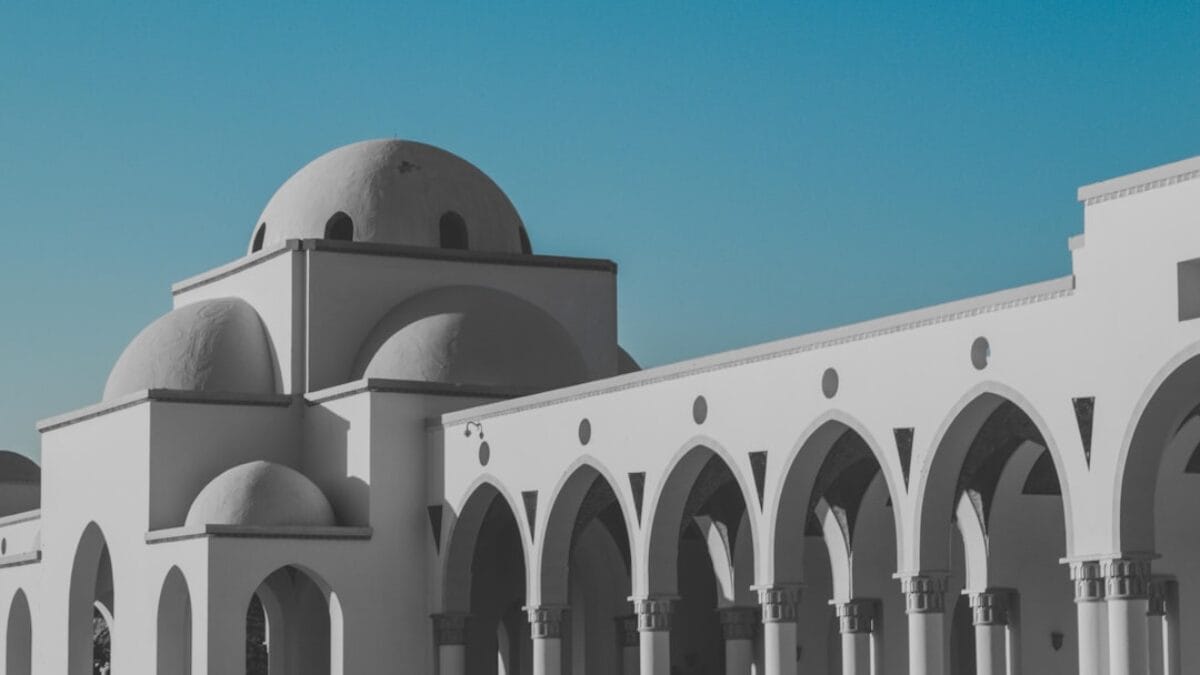Sustainable Architecture has emerged as a critical discipline in the contemporary world, addressing the urgent need to balance human development with environmental stewardship. This innovative approach to building design and construction integrates ecological responsibility, resource efficiency, and occupant health to create structures that minimize environmental impact while enhancing quality of life. As climate change accelerates and natural resources become increasingly scarce, sustainable architecture offers a viable pathway toward creating resilient, low-carbon built environments that can endure for generations. The principles of this field extend beyond mere energy conservation to encompass holistic systems thinking, where buildings function as living organisms that interact harmoniously with their surroundings. By reimagining how we design, construct, and occupy spaces, sustainable architecture presents transformative solutions for some of humanity’s most pressing challenges.
Core Principles and Philosophical Foundations
Sustainable architecture operates on several fundamental principles that differentiate it from conventional building practices. At its core is the integration of natural systems with built environments, creating symbiotic relationships between architecture and ecology. This approach prioritizes regenerative design rather than merely sustainable practices, aiming to restore environmental health through building operations. The discipline embraces a cradle-to-cradle lifecycle perspective, where materials are considered in terms of their entire existence—from extraction and manufacturing to use and eventual reuse or biodegradation. Unlike traditional linear models of consumption, sustainable architecture seeks to eliminate waste by mimicking nature’s closed-loop systems.
Historical Evolution and Modern Context
The roots of sustainable architecture can be traced back to ancient civilizations that developed climate-responsive building techniques through vernacular traditions. Indigenous cultures worldwide created structures that harmonized with local environments using passive design strategies. However, the modern sustainable architecture movement gained significant momentum during the energy crises of the 1970s, which highlighted the unsustainable nature of resource-intensive construction. The 1990s saw formalization through rating systems like LEED (Leadership in Energy and Environmental Design) and BREEAM (Building Research Establishment Environmental Assessment Method), establishing measurable standards for sustainable performance. Today, the field has evolved to incorporate advanced technologies while maintaining a strong emphasis on human-centered design and social equity.
Environmental Imperative and Climate Response
The built environment accounts for approximately 40% of global energy consumption and 39% of carbon emissions, according to the United Nations Environment Programme. This staggering statistic underscores why sustainable architecture represents a critical climate solution. By reducing operational energy demands through passive design and efficient systems, buildings can significantly lower their carbon footprint. Moreover, sustainable construction practices address embodied carbon—the emissions associated with material production and transportation—through careful material selection and waste reduction. As climate impacts intensify, resilient design strategies that anticipate changing environmental conditions have become essential components of sustainable architecture, ensuring structures can withstand extreme weather events and resource scarcity.
Key Components of Sustainable Architecture
Energy Efficiency and Renewable Integration
Energy optimization forms the cornerstone of sustainable architecture, achieved through multiple complementary strategies. Passive design leverages natural phenomena to reduce mechanical heating and cooling needs. This includes strategic building orientation to maximize solar gain in winter while minimizing it in summer, natural ventilation systems, and thermal mass integration that regulates indoor temperatures. Active systems work in tandem with passive solutions, featuring high-efficiency HVAC equipment, advanced insulation, and air-tight construction to minimize energy loss. Renewable energy generation through building-integrated photovoltaics (BIPV), solar thermal systems, and small-scale wind turbines can offset remaining energy demands. Smart building management systems further optimize performance by monitoring and adjusting energy consumption in real-time based on occupancy and environmental conditions.
Water Conservation and Management
Water represents another critical resource addressed by sustainable architecture, with solutions spanning collection, usage, and treatment. Rainwater harvesting systems capture precipitation from roofs and paved surfaces for non-potable uses like irrigation and toilet flushing. Greywater recycling processes water from sinks and showers for secondary applications, significantly reducing freshwater demand. Low-flow fixtures and water-efficient appliances minimize consumption without compromising functionality. Sustainable sites incorporate permeable paving, bioswales, and native drought-resistant landscapes to reduce runoff and support groundwater recharge. On-site treatment systems like constructed wetlands can purify wastewater to standards suitable for irrigation, creating closed-loop water systems that drastically reduce strain on municipal supplies and natural water bodies.
Sustainable Materials and Circular Economy
Material selection profoundly impacts a building’s environmental footprint, influencing both embodied carbon and long-term performance. Sustainable architecture prioritizes locally sourced materials to reduce transportation emissions and support regional economies. Rapidly renewable resources like bamboo, cork, and reclaimed timber offer durable alternatives to conventional materials with high environmental costs. Recycled content products—including steel, concrete, and insulation—divert waste from landfills while reducing virgin material extraction. The field increasingly embraces biophilic materials—substances derived from living organisms that sequester carbon and improve indoor air quality. End-of-life considerations drive designs for disassembly and material recovery, enabling components to be reused or repurposed at a building’s conclusion of service life. This circular approach contrasts sharply with the traditional “take-make-dispose” linear model.
Site Integration and Ecosystem Services
The relationship between buildings and their surroundings is fundamental to sustainable design, which seeks to enhance rather than degrade ecological systems. Site analysis examines solar patterns, prevailing winds, topography, and existing vegetation to inform optimal placement and form. Development strategies minimize land disturbance through compact footprints and preservation of natural habitats. Green roofs and walls provide insulation, reduce urban heat island effects, and create habitats for biodiversity. Sustainable sites restore ecological function by incorporating native plants that support local wildlife and pollinators. Stormwater management mimics natural hydrology through permeable surfaces, retention basins, and vegetated channels that filter pollutants and replenish groundwater. These approaches transform buildings from environmental liabilities into assets that contribute positively to ecosystem services.
Indoor Environmental Quality and Human Health
Sustainable architecture recognizes that buildings must serve human well-being as much as environmental goals. Indoor environmental quality encompasses air, thermal, acoustic, and visual comfort parameters optimized for occupant health and productivity. Low-VOC (volatile organic compound) materials prevent off-gassing of harmful substances, while advanced ventilation systems maintain optimal air exchange rates. Thermal comfort strategies include operable windows, radiant heating/cooling, and personalized climate controls. Natural lighting design maximizes daylight penetration while minimizing glare and heat gain. Acoustic considerations address sound transmission between spaces and exterior noise through strategic insulation and sound masking. Biophilic design elements—natural materials, vegetation, and views of nature—further enhance psychological well-being and cognitive function, creating spaces that nurture occupants holistically.
Benefits and Importance
Environmental Resilience and Carbon Reduction
The most significant benefits of sustainable architecture manifest in environmental protection and climate mitigation. Buildings designed with sustainable principles can achieve 50-70% energy savings compared to conventional structures, dramatically reducing operational carbon emissions. When combined with renewable energy generation, these structures can approach or achieve net-zero carbon status. Material optimization and circular economy practices significantly lower embodied carbon, addressing emissions generated during construction. Sustainable sites protect biodiversity and ecosystem services while enhancing landscape resilience against climate impacts like flooding and extreme heat. By reducing pressure on natural resources and waste streams, sustainable buildings help preserve ecological systems for future generations. These environmental benefits extend to improved air and water quality in surrounding communities, creating cascading positive effects on public health and ecological balance.
Economic Advantages and Market Transformation
Beyond environmental benefits, sustainable architecture delivers compelling economic returns that drive market adoption. While initial costs may be 2-5% higher than conventional construction, lifecycle cost savings typically range from 25-30% through reduced energy, water, and maintenance expenses. Property values increase by 7-11% for green-certified buildings, reflecting tenant demand for healthy, efficient spaces. Operational savings free capital for other investments, improving financial performance. The sector generates significant economic activity through job creation in green construction, renewable energy installation, and sustainable manufacturing. As sustainability becomes standard practice, early adopters gain competitive advantages through brand differentiation and market positioning. Additionally, resilient designs reduce long-term costs associated with climate damage and resource scarcity, protecting building owners from future economic disruptions.
Social Equity and Community Well-being
Sustainable architecture addresses social dimensions by creating spaces that promote health, equity, and community cohesion. Healthy buildings with excellent indoor environmental quality reduce respiratory illnesses, allergies, and stress-related conditions, improving occupant productivity and quality of life. Access to natural light, views, and indoor vegetation enhances mental health and cognitive performance. Energy-efficient structures lower utility costs, alleviating energy poverty for low-income households. Sustainable development practices in underserved communities can revitalize neighborhoods while preserving local character and cultural heritage. Mixed-use developments reduce transportation needs and foster vibrant, walkable communities. By considering diverse user needs and cultural contexts, sustainable architecture creates inclusive spaces that serve all community members equitably. These social benefits contribute to stronger, more resilient communities capable of weathering economic and environmental challenges.
Regulatory Compliance and Future-Proofing
As environmental concerns intensify, regulations increasingly mandate sustainable building practices. Many jurisdictions now require energy codes exceeding minimum standards, with some regions implementing net-zero energy targets for new construction. Water conservation measures become mandatory in water-scarce regions. Sustainable architecture ensures compliance with evolving regulations while exceeding current standards through adaptive design. Future-proofing strategies account for climate change impacts like rising temperatures, precipitation pattern shifts, and extreme weather events, ensuring buildings remain functional and safe for decades. Materials are selected considering potential supply chain disruptions and resource scarcity. Digital building platforms enable continuous performance monitoring and optimization throughout a building’s lifespan. This proactive approach positions building owners to meet future requirements without costly retrofits, protecting long-term investments.
Practical Applications
Residential Sector: Sustainable Homes
In the residential sector, sustainable architecture transforms single-family homes and multi-family dwellings into high-performance living spaces. Passive house standards achieve extreme energy efficiency through superior insulation, airtight construction, and heat recovery ventilation. These homes maintain comfortable temperatures with minimal mechanical systems while providing excellent indoor air quality. Net-zero energy homes generate as much renewable energy as they consume through rooftop solar arrays and geothermal systems. Sustainable residential designs often incorporate shared amenities like community gardens and tool libraries in multi-family developments, reducing individual resource consumption. Prefabricated modular systems enable precise, waste-efficient construction while maintaining design flexibility. Examples include the BedZED development in London, which combines solar panels, rainwater harvesting, and sustainable materials to create a carbon-neutral community. These residential models demonstrate that sustainable living can be both comfortable and affordable.
Commercial Buildings: Productive Workspaces
Commercial buildings represent significant opportunities for sustainable innovation, directly impacting worker productivity and corporate sustainability goals. Green office buildings often feature biophilic design elements like living walls and indoor gardens, which studies show can increase worker productivity by 15% and creativity scores by 6%. Daylight harvesting systems optimize natural light while minimizing solar heat gain, reducing lighting energy use by 50-80%. Advanced building automation systems personalize thermal and lighting comfort for occupants while optimizing energy use. Sustainable retail spaces incorporate energy-efficient refrigeration, daylight in sales areas, and water-wise fixtures. Hospitality venues reduce water consumption through linen reuse programs and water-efficient landscaping. The Edge in Amsterdam, often cited as the world’s greenest building, generates more energy than it consumes through integrated solar panels, rainwater harvesting, and a revolutionary climate control system. These commercial applications prove that sustainability and profitability can coexist harmoniously.
Institution














Post Comment